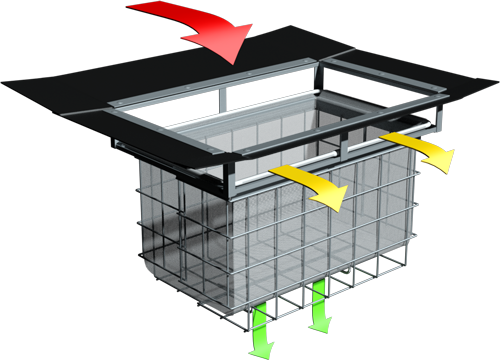When prevention of pollutants entering the stormwater drainage system is necessary, Stormwater Quality Improvement Devices or SQIDs are required to reduce the pollutant concentrations.
SQIDs are designed to remove a wide range of pollutants including sediments, metals, oils, nutrients, and gross pollutants from stormwater before it has a chance to join any natural bodies of water. SQIDs are used to implement best practice quality management of stormwater ensuringWater Quality Objectives are met as per the local requirements, protecting downstream rivers, creeks, and other water bodies.
Stormwater management strategies are an important component and will always be needed for the protection of downstream water bodies. If strategies are not employed or lack reasonable potency, things won’t change, and our waterway degradation will continue. Determining factors when it comes to SQIDs include geographic location, local annual precipitation and intensity, evolving waterway management strategies, and newly developed land.
Most SQIDs have been designed for management of pollutant loads during a developments operational phase. However, some regional or developing areas may require on-site stormwater treatment devices to be utilised during the construction phase as a sediment and litter trap. Because SQIDs are often associated with significant on-going maintenance and construction costs, alternative strategies such as source controls should always be considered and evaluated carefully.
Some Types of SQIDs
Constructed Artificial Wetlands
While they generally need to cover quite a large area to effectively remove pollutants, wetlands that have been constructed artificially can produce excellent results with stormwater treatment. It is essential that Artificial Wetlands are preceded by sediment basins which allow them to effectively remove small to large size sediment particles, as well as nutrients and toxicants such as heavy metals.
Gross Pollutant Trap and Trash Rack
Designed to trap coarse pollutants that can be carried by stormwater, a Gross Pollutant Trap or GPT is a device that is installed within the drainage system and typically end of line, or around an identified pollution hot spot as source control. Some are situated above the ground, while other GPTs are fitted below the ground and some with fine screens which trap smaller litter and sediment particles. GPTs help to reduce the amount of minor pollutants such as particulate phosphorus and nitrogen, as well as heavy metals that can often be carried by finer sediment particles.
A trash rack is often a steel structure installed across an open channel and designed to collect larger items and pollutants or debris. This can include rubbish like glass bottles, containers, and aluminium cans, as well as green waste like leaves, branches, logs, and even dead or alive animals.
Stormwater Pit Inserts/Baskets
Usually installed inside stormwater pits on the roadside or throughout a development, these SQIDs are used to collect leaves, litter, sediment and other associated pollutants.
While SQIDs aren’t the only method of improving the quality of stormwater to protect receiving environments downstream, they certainly are one of the most effective. Other options include elements of Water Sensitive Urban Design including permeable paving, infiltration areas, and grass swales, as well as non-structural measures such as enforcement strategies and education. Contact Ocean Protect today to find out more about SQIDs.



